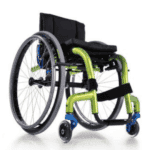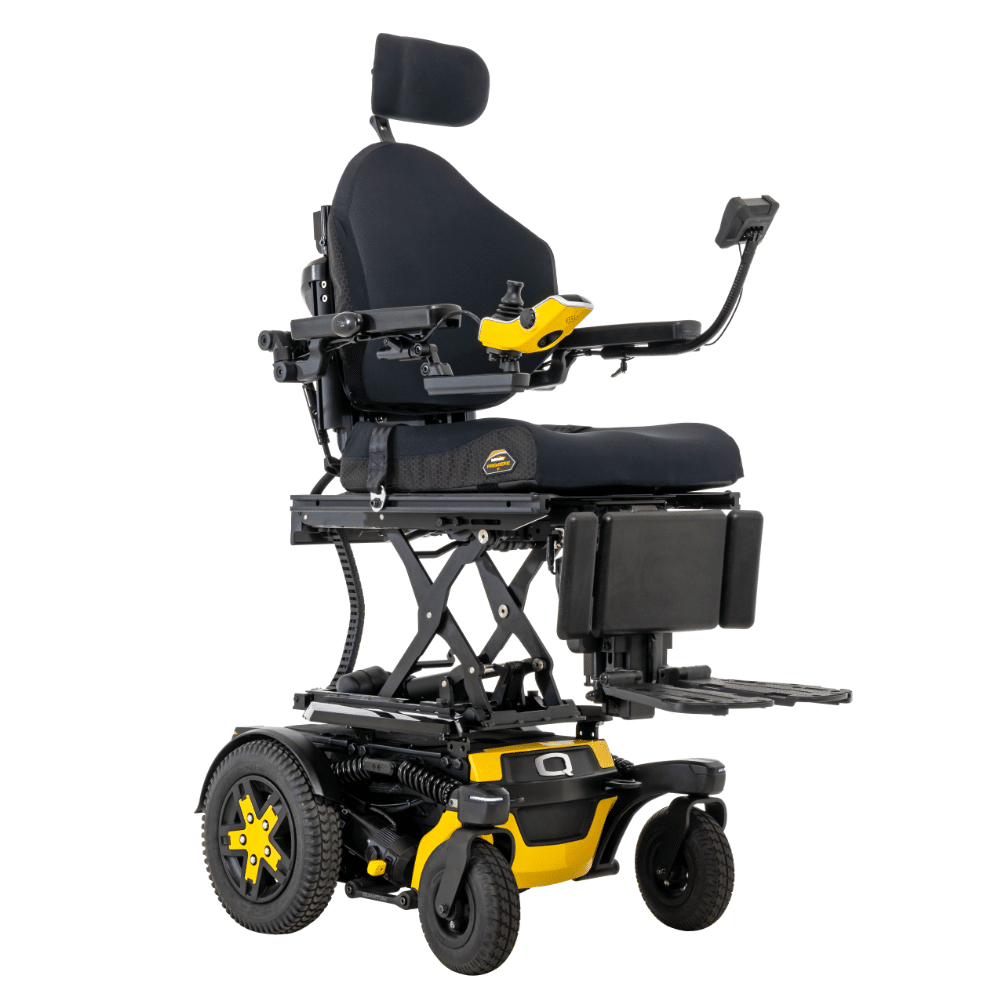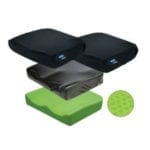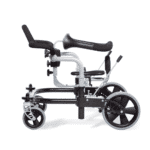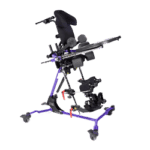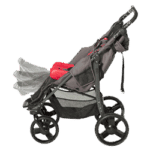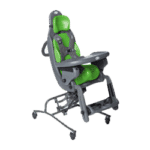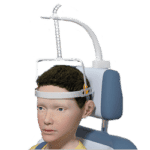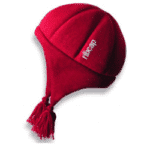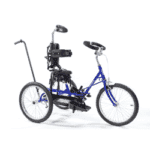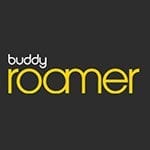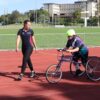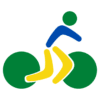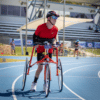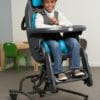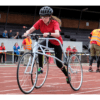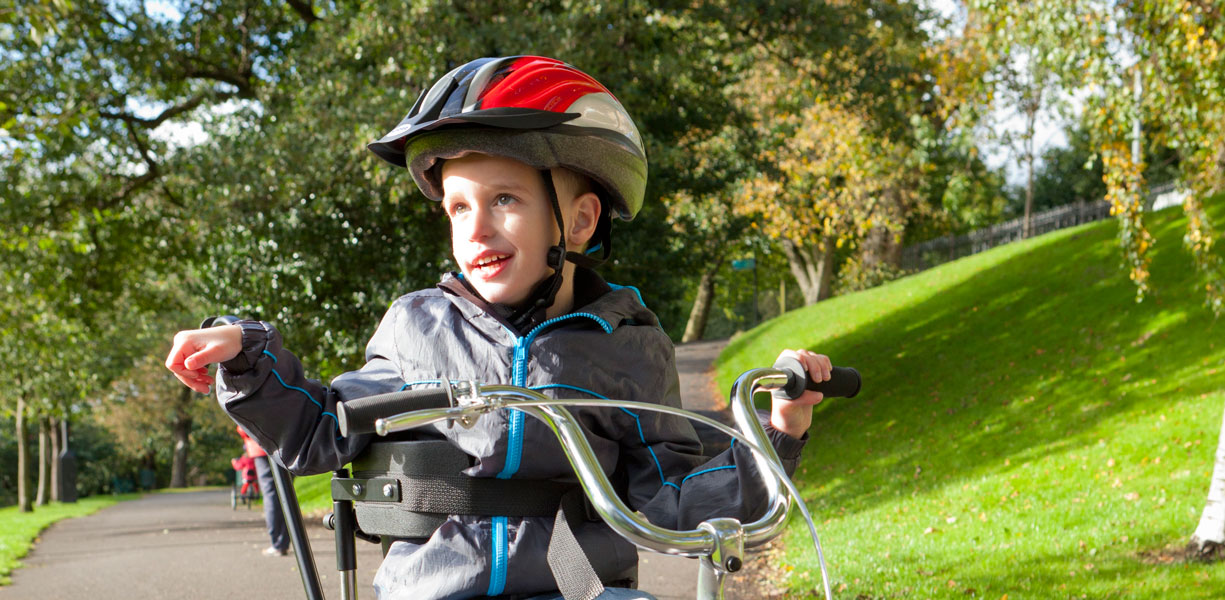
To help with the selection of the best cycle for the rider, Theraplay has developed the following sizing guide to assist you in picking the most appropriate model. This guide is designed to provide you with information on the key points to consider before purchasing a cycle and to give you an idea of the correct size of trike.
There are a number of key factors to consider before deciding upon a cycle selection for a rider.
Can the rider comfortably pedal a trike?
Will the cycle be propelled by hand or by foot?
- Theraplay cycles have the option of a low gear ratio which makes them very easy to propel. If a rider is unable to pedal a cycle by foot then a Handcycle might be appropriate if the rider has limited use of the lower limbs. This might be because of limited movement in joints or through spinal injury or if the rider has Spina Bifida, SMA or other condition which might limit the use of lower limbs. (Product suggestion – Tri-Lo Handcycle). See below for more information on foot pedal cycles.
The following chart provides information on the Theraplay Hand Cycles.
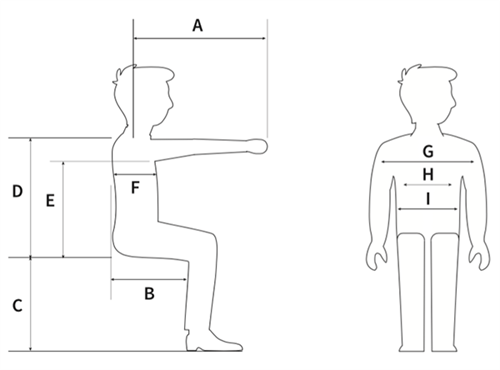
| Rider Measurements | Dimensions (inches) | |||
| Tri-Lo Models | Mini | Standard | Large | |
| A | Arm Reach – Shoulder to clenched fist | 10 – 18 | 10 – 20 | 17 – 25 |
| B | Seat Depth – Back of knee to backrest of chair | 10 | 10 | 12 |
| C | Seat to Footplate – underside of thigh to underside of foot | 8 | 10 | 13 |
| If extra pelvic or upper trunk support is required these dimensions may be required. | ||||
| D | Shoulder Height – Seat surface to top of shoulder | |||
| E | Axilla Height – Seat surface to underarm | |||
| F | Thoracic Depth – Backrest surface to front of chest | |||
| G | Shoulder width | |||
| H | Chest width | |||
| I | Hip width | |||
| . | 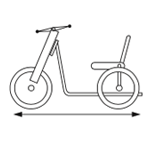 |
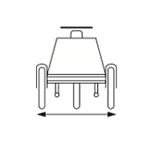 |
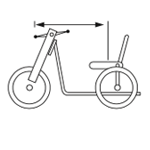 |
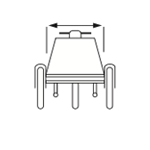 |
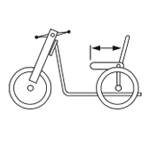 |
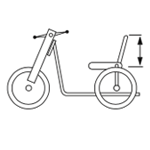 |
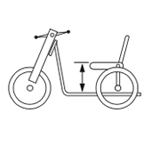 |
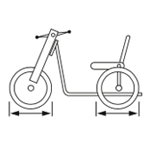 |
 |
|
|---|---|---|---|---|---|---|---|---|---|---|
| . | Overall Length | Overall Width | Centre of seat to Pedals (min – max) |
Seat Width | Seat Depth | Backrest Height | Seat Foot Platform | Wheel Size | Max User Weight | |
| Mini | 40″ (1020mm) | 25″ (640mm) | 12″ (305mm) | 19″ (480mm) | 14″ (360mm) | 10″ (250mm) | 10″ (250mm) | 8″ (200mm) | 3 x 12.5″ | 70lbs (32kg) |
| Standard | 43″ (1100mm) | 25″ (640mm) | 12″ (305mm) | 20″ (510mm) | 14 (360mm) | 10″ (250mm) | 11″ (280mm) | 11″ (280mm) | 12.5″ front 16″ rear | 100lbs (45kg) |
| Large | 51″ (1300mm) | 28″ (710mm) | 17″ (430mm) | 26″ (660mm) | 18″ (460mm) | 12″ (305mm) | 12″ (305mm) | 13″ (330mm) | 3 x 16″ | 130lbs (59kg) |
If the cycle is to be propelled by foot pedals then there are several other considerations to take into account.
What kind of environment will the trike be used in?
a. Is the cycle for use in a playground or a managed area or will it be used on pathways or public areas?
- If the cycle is going to be used in public areas it should be fitted with two forms of braking to slow or stop the cycle. If the cycle is for use in a playground or adventure play area then a cycle does not need to be fitted with two brakes. Most cycles for this type of use are simple direct drive cycles with the pedals fitted to the front wheel. The TUFF Cycle range is designed for this type of environment.
b. Where will the cycle be used, in the local area or will it need to be transported for use in parks or other open areas?
- Most Theraplay cycles have the added feature of a frame folding mechanism which allows them to be folded or separated into two sections for easier transportation.
What are the riders abilities?
a. Is the rider independently mobile or a stroller/wheelchair user?
- If the rider is independently mobile, then cycles such as a T5 tricycles or TRACER Models may provide the most enjoyable cycling experience.
b. Does the rider have a good range of movement in their joints?
- If the rider has a restricted range of movement in either or both legs then it may be appropriate to consider the crank length to reduce the pedalling arc, or to look at the Hand Cycle.
c. How aware of danger is the rider?
- Does the rider have the cognitive understanding of when to brake and how to steer the cycle independently? If the rider needs assistance with steering and/or braking, then a parental control system can be added to the tricycle. The parent/carer can then guide the cycle when necessary and slow the cycle if required.
- If the rider is very active, then a QUAD Cycle or a TRACER Model may be appropriate due to their enhanced stability.
d. Will the rider transfer onto the cycle independently or will they be assisted?
- It is possible to make transfer onto the cycles easier by adding Quick Release Pedals and a Swivel Seat Mechanism to enable easier access for a standing transfer. These accessories can also be very useful with some forms of mobile hoists.
e. What level of seating support will be required by the rider?
- Can the rider sit independently without support? If the rider requires extra support to sit comfortably and safely on the saddle then a Back/Trunk support should be added. Theraplay offers two main types, the style will depend upon the level of support required by the rider.
- Is the rider able to grip a grab bar? The ability to hold the handlebar allows the rider to steer the cycle but it also offers the rider greater postural control for sitting on the cycle. Theraplay offers a variety of adjustable handlebar types which can be adjusted to the optimum position for the rider. In addition, hand supports can be added to make it easier for the rider to maintain their grip on the handlebars, these items are called Handlebar Mits.
- Can the rider maintain good head control? Head supports can be added to the cycles to assist the rider in maintaining their head position.
- Will the rider be able to maintain their foot position on the pedals? There are several options available to assist the rider in maintaining their foot position on the pedals.
f. Is the rider likely to fatigue quickly when cycling?
- There are several gear types available as well as several sizes of gear ratio. If the rider is likely to fatigue quickly then an Option Drive Gear is a useful accessory as this enables the pedalling action can be disengaged meaning the rider can sit on the cycle and be pushed whilst resting.
For a more accurate guide to finding the correct size of cycle, take time to measure the riders inside leg and using the chart shown below:
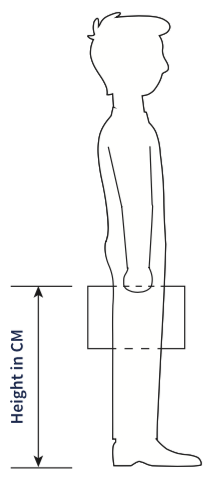
- Stand the rider, in their socks, against a wall. Place a small book between their legs as high as is comfortable. Ask the rider to step away from the wall and measure from the top of the book to the floor.
- The same measurement can be taken lying down. With the rider lying on their back, measure from the underside of the foot to the top of the inseam of the trouser leg. If the rider is unable to fully straighten their leg, measure to the maximum comfortable point of leg extension
Once you have measured the inside leg, use the table below to find the right size of cycle for the rider. The seat height can be adjusted as the rider grows and the handlebar position can be adjusted to accommodate different arm reaches.
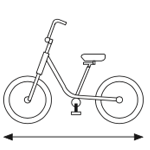 |
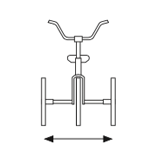 |
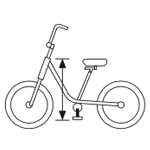 |
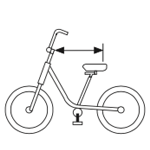 |
 |
|
|---|---|---|---|---|---|
| Overall Length | Overall Width | To Suit Inside Leg | Seat to Handle Bars (min – max) |
Max User Weight | |
| Imp | 1000mm (39.5″) | 610mm (24″) | 320mm (12.5″) – 430mm (17″) | 280mm (11″) – 370mm (14.5″) | 32kg (70lbs) |
| Terrier/Terrier Hitch | 1140mm (45″) | 735mm (29″) | 420mm (16.5″) – 545mm (21.5″) | 360mm (14″) – 430mm (17″) | 45kg (100lbs) |
| TMX/ TMX Hitch/ TMX T5 | 1500mm (59″) | 735mm (29″) | 510mm (20″) – 640mm (25″) | 480mm (19″) – 560mm (22″) | 70kg (150lbs) |
| Quad – Small | 1450mm (57″) | 800mm (31.5″) | 510mm (20″) – 640mm (25″) | 480mm (19″) – 560mm (22″) | 100kg (220lbs) |
| Tracer Jnr | 1780mm (70″) | 800mm (31.5″) | 510mm (20″) – 710mm (28″) | 480mm (19″) – 560mm (22″) | 70kg (150lbs) |
| Tracker 20″/ Tracker T5 20″ | 1650mm (65″) | 800mm (31.5″) | 610mm (24″) – 740mm (29″) | 535mm (21″) – 610mm (24″) | 90kg (200lbs) |
| Quad – Large | 1750mm (69″) | 800mm (31.5″) | 640mm (25″) – 760mm (30″) | 535mm (21″) – 610mm (24″) | 100kg (220lbs) |
| Tracker 24″/ Tracker T5 24″ | 1753mm (69″) | 800mm (31.5″) | 640mm (25″) – 760mm (30″) | 535mm (21″) – 610mm (24″) | 90kg (200lbs) |
| Tracer | 1930mm (76″) | 800mm (31.5″) | 640mm (25″) – 815mm (32″) | 560mm (22″) – 640mm (25″) | 100kg (220lbs) |




